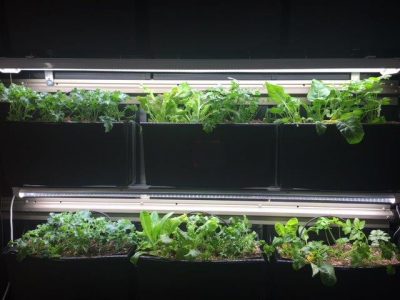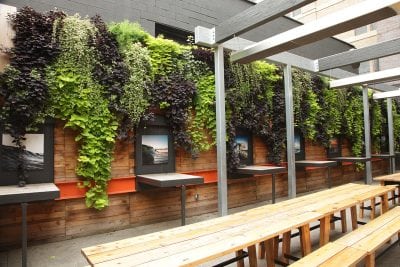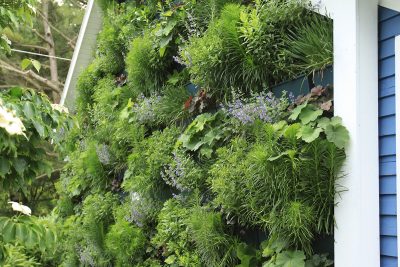Plant Selection & Pairing
Choosing the right plants for your wall is critical to satisfaction and performance.
Plant Options
Patterned Living Wall Examples
The following planter layouts can be used as references for designing your living wall with patterns. Click and drag the sliders to see before and after images of the structure design and finished planted wall.
Layout drawings are examples and should be used for reference only.
Depending on the wall orientation, climate, and design intent, designers may choose from a broad variety of plant types. These include:
- Annual plants
- Perennial plants
- Edibles such as vegetables, herbs, and strawberries
- Succulents
- Tropical Plants
LiveWall has trialed hundreds of plants and has compiled our findings in living wall plant selection and pairing design guides for each of the plant types above. Copies of the plant selection and pairing guides are available to customers. To determine which plant types are best for your project, please contact us at sales@livewall.com or call 877-554-4065.
For inspiration, click below to see a gallery of projects by type of plants.
We have dozens of trial living walls at our facilities and nearby public sites.
In these trial walls, we test plants for both indoor and outdoor performance and hardiness. We are constantly trialing dozens of plant selections at any given time, and require that plants be of sufficient size, hardiness, and low maintenance to thrive in our green wall system.
The LiveWall system does an excellent job of growing a broad array of greens, lettuce and herbs. When those plants are grown indoors, the plants must receive enough light of the correct spectrum.
Fortunately, we have a solution for that! We have tested and selected a lighting product with the best overall plant growth performance and value. We developed an ingenious bracket for mounting these lights and allowing for simple plant replacement or system inspection.
Contact your LiveWall representative to learn more; call us at 877-554-4065.
Annual Planted LiveWalls are very easy regardless of climate, with comparatively fewer maintenance events than perennials.
Perennial Planted LiveWalls are easy in mild climates (like San Diego, Seattle or Tampa), with very few losses, even during winter. If well maintained, certain plant species can last for years.
In cold winter climates (like Michigan, Maine or Minnesota), living walls planted with perennials require diligent oversight and adherence to timely maintenance events to optimize overwintering. If all care is done correctly and on time, we have found that:
- Winter survival can be good (90+ %) during mild winters,
- Winter survival can be fair (70+ %) during average winters, and
- Winter survival can be poor (25% or less) following harsh winter weather.
In all cases, overwintering success varies with exposure (wind/sun), geography (cloudy conditions make it easier), and the characteristics of the supporting wall (structural walls are better than fence applications, as they keep the soil warmer).
Naturally, LiveWall, LLC, wants every customer to derive optimal value and enjoyment from their LiveWall products—whether using annuals or perennials. For this reason we have compiled a list of features that allow for easy comparison of the costs/benefits of annuals vs perennials (below). No matter what you decide, you are not locked in for life — LiveWall is designed so that you can change the plants anytime you like.
COST
MANAGEMENT
VISUAL APPEAL
SUSTAINABILITY
IN SUMMARY, whether you choose annuals or perennials you can have an amazing experience with your LiveWall. We are here to support you with recommendations for plants and an easy-to-follow, time-proven protocol for caring for them. If you have multiple walls, you might want to have annuals and perennials, perhaps in alternating fashion. Occasionally, people combine annuals and perennials in the same planting. LiveWall gives you quite a great deal of flexibility.






























